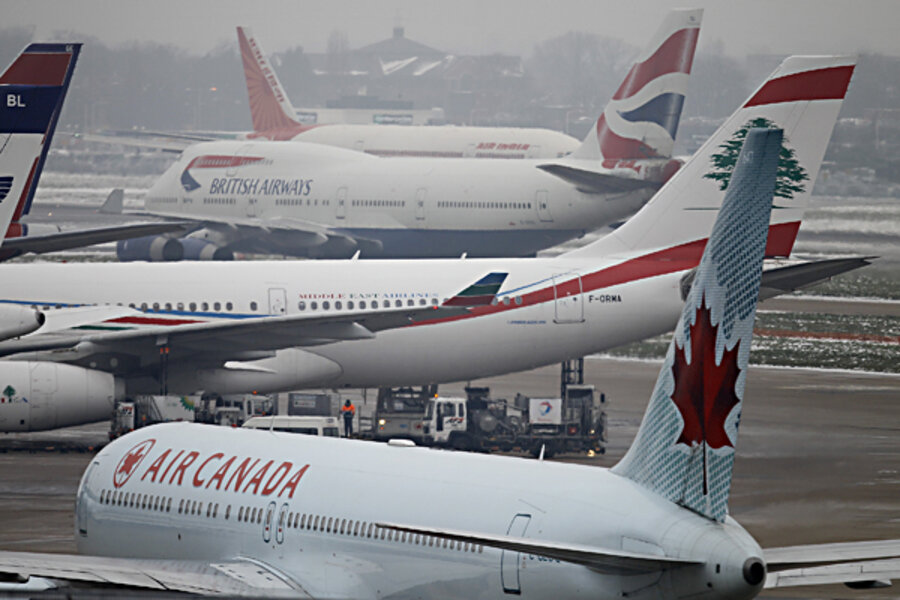Blizzards will hit Heathrow again: How to prepare?
Loading...
A rare major snowstorm in Europe has crippled airports as major airports such as Heathrow were caught unprepared for a major storm. Stranded customers are angry and wondering why the airport didn’t have a contingency plan (or snow trucks) to handle serious snow.
In the Summer of 2010, a major heat wave hit Moscow. The city was caught unprepared for a major heat wave. Moscow residents were angry and wondered why the city and themselves didn’t have a contingency plan for how to handle the heat in the same way that people in Phoenix do. Do you see the similarities between these two paragraphs?
The core logic of my book Climatopolis is: “fool me once shame on you, fool me twice shame on me”. In the 1960s and 1970s, academic nerd economists debated whether people have myopic expectations (tomorrow will be like today), or rational expectations (our best guess of tomorrow’s weather equals the true average but we do make forecast errors). Climate change adaptation pushes this issue to forefront again.
Climate change will increase the volatility of weather events. There will be more snowy days and more hot days. How does this increased risk affect investment today? Consider the basic microeconomics logic of the Heathrow airport. In 2010, assume that the firm who operates the airport believes that there is a 1 in 10000 chance of a major snowstorm. Suppose that plowing equipment costs $1 million dollars to buy and operate. Assume that the damage to the reputation of the airport due to customer anger from delays equals $1 billion dollars when a snow event occurs and the airport isn’t ready to handle it. Will the rational cost minimizing airport prepare?
CASE #1: The airport doesn’t invest in the snow equipmentWith probability 99.99% there is no disaster and nothing to worry about.With probability 1/10000 the airport loses 1 billion dollars. The expected loss = 100,000
CASE #2: The airport invests in the snow equipmentSo with probability 1 , it pays $1 million dollars but it has 0 probability of a public relations disaster.Since $100,000 < $1 million, the firm will chose CASE #1 and disasters will occur.
NOW INTRODUCE Climate Change --- watch this Joe Romm! If the airport anticipates that the probability of a major snowstorm rises from 1/10000 to 1/500 --- let’s recalculate the expected values from each investment choice.
CASE #1: The airport doesn’t invest in the snow equipmentWith probability 99.5% there is no disaster and nothing to worry about.With probability 1/500 the airport loses 1 billion dollars. The expected loss = $2 million
CASE #2: The airport invests in the snow equipmentSo with probability 1 , it pays $1 million dollars but it has 0 probability of a public relations disaster.Since $1 million < $2 million, the firm will chose CASE #2 and climate shocks will cause less damage to our economy.
So, if airports hire climate scientists as consultants in planning investment strategies -- then expected future disasters will not nail the airports! As Mother Nature changes the rules of the game, we change our investment patterns. Because our climate scientists are good, they give us a leading indicator of where Mother Nature is trending and we invest and our ready for her. Now, if the climate scientists say that they know nothing about the future we will face --- then we face a challenge but in this case of complete anticipated ignorance we have an incentive to build in the "precautionary principle" into our investments to be ready for the possible unknowns.
This investment example is a key piece of the core logic of Climatopolis. Note that none of the critics of Climatopolis have discussed this point at all in which they link climate science to actual choices and choices to consequences for the real economy. But, this broad example is a crucial nexus between climate and the economy. The key assumption that critics have ignored in discussing my book is that we are forward looking adults who will adjust our subjective assessments of the future as new news (such as Moscow Heat Wave) or the London Snow of December 2010 take place.
Investment under uncertainty will become a hot topic again and Lucas and Prescott will generate more citations!
Note the key role for the climate scientists. Those nerds will do the basic research to help us foresee the consequences of climate change. If they can produce forecasts with spatial resolution, then this will greatly help investment planning in where to build infrastructure and how much slack capacity must be embodied in the infrastructure (such as San Francisco future airport flood concern) to minimize the probability of ugly events. We need options built into our investments because we know that we don’t know what climate change will actually do.
------------------------------
The Christian Science Monitor has assembled a diverse group of the best economy-related bloggers out there. Our guest bloggers are not employed or directed by the Monitor and the views expressed are the bloggers' own, as is responsibility for the content of their blogs. To contact us about a blogger, click here. This post originally ran on greeneconomics.blogspot.com.





